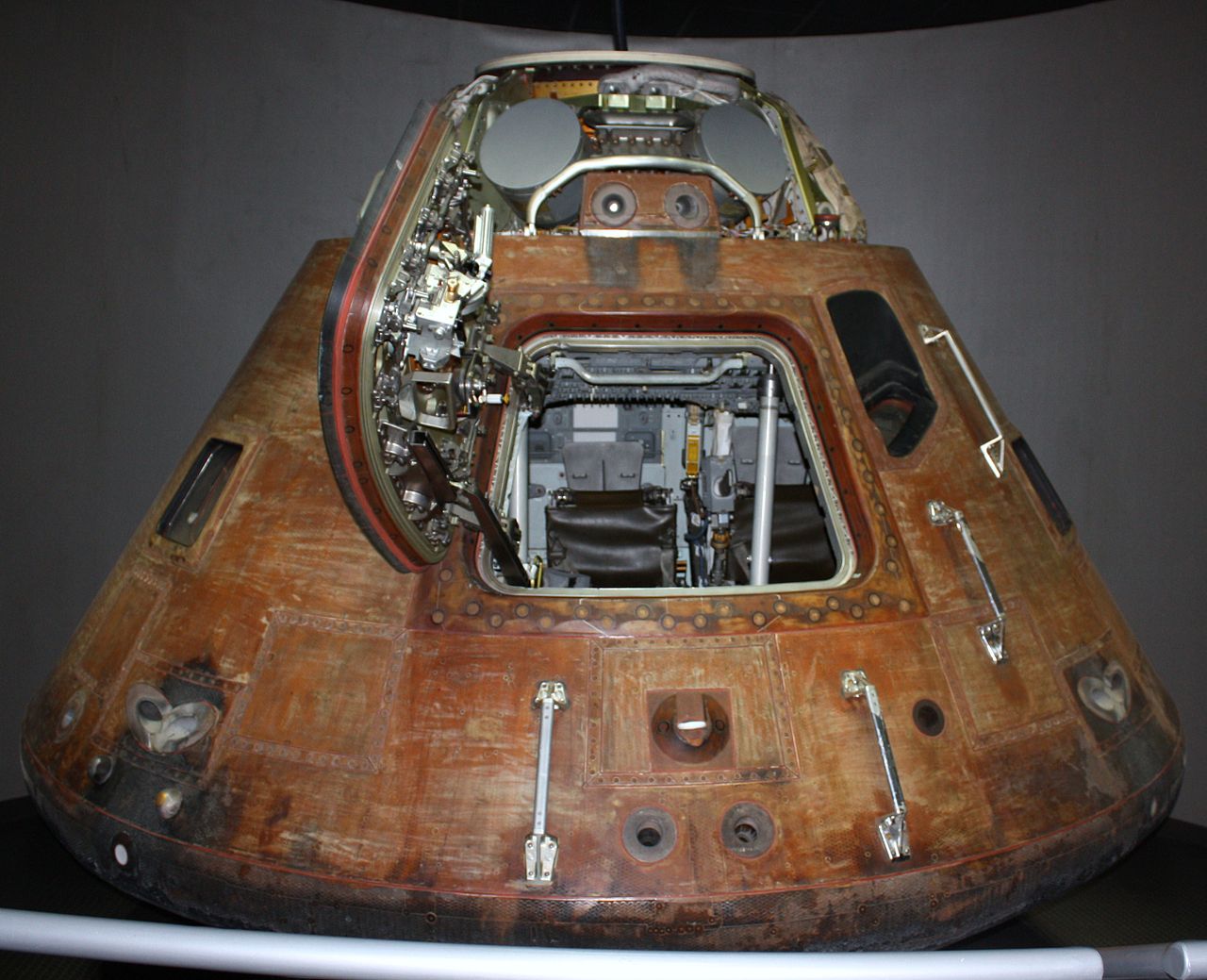New Mars Forums
You are not logged in.
- Topics: Active | Unanswered
Announcement
#251 2019-03-20 19:35:33
- SpaceNut
- Administrator
- From: New Hampshire
- Registered: 2004-07-22
- Posts: 29,457
Re: Starship is Go...
The earth spins faster at the equator than at further distances from it. You gain the difference from the spin of earth for the location.
Offline
Like button can go here
#252 2019-03-20 19:53:06
- Void
- Member
- Registered: 2011-12-29
- Posts: 8,279
Re: Starship is Go...
Yes, it would not hurt to have multiple options for getting bulk materials into orbit. So you are correct.
>Texas<>Florida<>North Brazil< makes a nice path though, almost a strait line, and with plenty of abort to water or islands/Coast options along the way, depending on what is prudent. A crippled ship aborted to water might be largely salvaged, crew if any may survive. A crash on land is more likely to destroy the ship, and kill the crew.
But Papua New Guinea is a great option. People have had their eyes on it in the past. But it would require the infrastructure, up into the mountains, and of course good, happy sentiments from the inhabitants.
But bulk to orbit with a fuel discount is something to have on the wish list. Just have to make sure that we don't get had by the players.
Done.
End ![]()
Offline
Like button can go here
#253 2019-03-22 11:58:07
- GW Johnson
- Member
- From: McGregor, Texas USA
- Registered: 2011-12-04
- Posts: 5,918
- Website
Re: Starship is Go...
So, I was correct, there will be PICA-X tiles as a windward side heat shield. I thought so. Bare metal leeward side? Mercury and Gemini capsules did that. Apollo did not.
Maybe augmented here and there with some film cooling. We'll see.
Such is the reality of heat transfer physics and engineering.
GW
GW Johnson
McGregor, Texas
"There is nothing as expensive as a dead crew, especially one dead from a bad management decision"
Offline
Like button can go here
#254 2019-03-22 15:10:49
- louis
- Member
- From: UK
- Registered: 2008-03-24
- Posts: 7,208
Re: Starship is Go...
Star Hopper ready to fire...
Let's Go to Mars...Google on: Fast Track to Mars blogspot.com
Offline
Like button can go here
#255 2019-03-23 05:02:24
- louis
- Member
- From: UK
- Registered: 2008-03-24
- Posts: 7,208
Re: Starship is Go...
Not much happened...but it does sound like preparations are quite well advanced.
Star Hopper ready to fire...
Last edited by louis (2019-03-23 05:02:37)
Let's Go to Mars...Google on: Fast Track to Mars blogspot.com
Offline
Like button can go here
#256 2019-03-23 18:45:56
- Void
- Member
- Registered: 2011-12-29
- Posts: 8,279
Re: Starship is Go...
I guess I will hijack this topic for one post Louis, otherwise I will behave myself.
I am trying to understand heat shields. For Starship, apparently Pica as the main star, and assistance from some type of active evaporative cooling where helpful, and on the leeward side, optimistically just some type of shiny stainless steel.
As for the active cooling previously I was receiving the information that the windward side will have two layers of stainless steel, and "Risers" separating/joining them.
What I am interested in for this description if true, is what are the potentials for the survival of the ship, if some of the Pica tiles are damaged/pop off?
Technically, if there is a gap between the two layers of stainless steel on the windward side, then you have a reservoir which might be filled with water or very chilled liquid Methane.
So, I am wondering what the balance of power would be for exposed stainless steel, which also has a reservoir of chilled liquid methane or water behind it? Does the hypersonic wind erode the stainless steel anyway, or will you have natural liquid convection, and perhaps boiling going on which can save the outer layer of stainless steel from catastrophic rupture?
Not that I think that they will, but it would be an interesting concept to make your fuel tank the belly of the ship. Granted, it would pick up heat if sunward, which would not be desired. However if you spun the ship so that the belly was away from the sun and in the shadows, then perhaps you create a heat sink. If there were boiling, then I suppose those vapors not rendered back to liquid by condensation either of cold or pumped pressurization, would need to be vented or consumed usefully.
A belly tank of that type could be helpful in a solar storm, rolling the ship would interpose the Methane or water as a radiation protectant, but of course if you have standard tanks you can just point the tail at the sun, I confess that makes more sense for that problem.
I just don't know what would win. Would the plasma abrade the outer shell, or would the "Tea Kettle" effect save the day? I suppose it would also matter when the tiles came off. I would not think anyone would attempt to enter a ship with such damage if they had a choice, so I perhaps am visualizing a situation where some tiles came off during re-entry.
Well, that is the approximate question.
Done.
Last edited by Void (2019-03-23 19:01:22)
End ![]()
Offline
Like button can go here
#257 2019-03-24 04:11:12
- RobertDyck
- Moderator
- From: Winnipeg, Canada
- Registered: 2002-08-20
- Posts: 8,144
- Website
Re: Starship is Go...
So, I was correct, there will be PICA-X tiles as a windward side heat shield. I thought so. Bare metal leeward side? Mercury and Gemini capsules did that. Apollo did not.
Oh? Then what did Apollo use? My understanding is Apollo had an aluminum alloy inner pressure hull, insulation between inner and outer hull, and stainless steel outer hull. That means Apollo did have bare metal leeward side. Mercury and Gemini had Rene 41 leeward side while Apollo used stainless steel, but it was still bare metal. Rene 41 was a nickel-chrome alloy, modern Inconel is almost identical. Inconel is produced by a different company so different brand name, but it has a fraction of a percent more of this metal, fraction of a percent less that, but it's the same metals. Apollo could get away with stainless steel because the shape of the cone; the flatter cone kept the side walls farther away from the hot gas coming around the heat shield.
Offline
Like button can go here
#258 2019-03-24 06:23:24
- louis
- Member
- From: UK
- Registered: 2008-03-24
- Posts: 7,208
Re: Starship is Go...
I am guessing that the Apollo return capsule had a hugely high ratio of external structure mass to internal cubic space - a ratio which would make it impossible to fly the Space X Starship. That's the advantage of a small return capsule. And of course they didn't have to worry about friction heat for the lunar landing itself.
GW Johnson wrote:So, I was correct, there will be PICA-X tiles as a windward side heat shield. I thought so. Bare metal leeward side? Mercury and Gemini capsules did that. Apollo did not.
Oh? Then what did Apollo use? My understanding is Apollo had an aluminum alloy inner pressure hull, insulation between inner and outer hull, and stainless steel outer hull. That means Apollo did have bare metal leeward side. Mercury and Gemini had Rene 41 leeward side while Apollo used stainless steel, but it was still bare metal. Rene 41 was a nickel-chrome alloy, modern Inconel is almost identical. Inconel is produced by a different company so different brand name, but it has a fraction of a percent more of this metal, fraction of a percent less that, but it's the same metals. Apollo could get away with stainless steel because the shape of the cone; the flatter cone kept the side walls farther away from the hot gas coming around the heat shield.
Let's Go to Mars...Google on: Fast Track to Mars blogspot.com
Offline
Like button can go here
#259 2019-03-24 12:20:05
- GW Johnson
- Member
- From: McGregor, Texas USA
- Registered: 2011-12-04
- Posts: 5,918
- Website
Re: Starship is Go...
I may be mis-remembering, but I thought there was a thin coat of something painted over that metal backshell on Apollo. I know the main heat shield was Avcoat.
The Mercury flew back essentially ballistically at zero angle, so the small tumblehome angle of its metal backshell was enough to keep it away from hypersonic slipstream scrubbing. At only 8 km/s from LEO, plasma radiation heating wasn't much of an issue, just convective heating. And velocities are far lower than freestream in a wake zone around that backshell. You have a chance to use bare metal cooled only be re-radiation, if the surface is black, meaning highly thermally emissive. And it was.
Gemini flew at a small passive angle for a bit of lift while entering, based on cg position off-center. It was still within the limits of its backshell tumblehome angle, so Gemini as "Mercury mark 2" came back with essentially the same scheme and conditions as Mercury.
Apollo was different, using a much larger angle for larger hypersonic lift for its trajectory shaping. The larger tumblehome angle of its backshell reflects this.
Coming back from the moon at about 10.9 km/s is fast enough that plasma radiation starts to dominate the heating picture. That's another big (and fundamental) difference from Mercury and Gemini. The adjacent slipstream radiates strongly right across the wake to heat the surface within that wake. Either you re-radiate very strongly from a very hot, very black surface, or else you may cover it with an ablative or attempt liquid cooling. You cannot afford the weight to simply heat-sink.
That's why I thought there was a coating on the metal backshell, maybe thin Avcoat, maybe something else, but it wasn't bare metal cooled by re-radiation. For one thing, Apollo had a nearly-white backshell color. Low thermal emissivity, that.
If you're ablating, you can use a light, low-emissivity color, and will see dark marks on it after entry. We did see that with Apollo.
If you're doing liquid cooling, you want a dark, re-radiating color as well, so as to add together the effects of liquid cooling and re-radiation. That cuts the weight of your liquid system some. The old X-20 DynaSoar was supposed to experiment with that combined re-radiation and liquid cooling approach. It was black metal surfaces, with a reinforced graphite ablative nose cap and leading edges.
If you want to survive free returns to Earth off of interplanetary trajectories, conditions are even more severe. Speeds range from 12 to at most about 17 km/s from Mars. Really severe plasma radiation as well as severe convection. Hiding in the wake reduces convection to the backshell, but not plasma radiation heating.
Currently the only known way to survive this is an ablative heat shield on the backshell, as well as a main windward-side ablative heat shield. Which very nicely dovetails with the observation that Spacex's Dragon capsules have a thick windward heat shield of PICA-X, and a thinner backshell heat shield of the same PICA-X. They were supposedly rated for a free return coming home from Mars.
GW
ps -- The X-15 had skins made of Inconel-X, now known as Inconel X-750. There are several Inconels now, along with Rene 41 and several others, all Mil Handbook 5 items these days. (The one I like best is Alloy 188.) The X-15 skins cooled entirely passively by re-radiation. They were very black, meaning highly thermally emissive.
There was a time when it was seriously proposed to shoot X-15's to orbit using then then-planned 3-core Titan-III booster. They quickly found from the warhead developments that the X-15 nose and leading edges would fail, and likely the lateral skins as well. That is why no serious attempt was ever made to rocket-launch an X-15. X-20 DynaSoar would do that job (although it was cancelled and never did).
Last edited by GW Johnson (2019-03-24 12:31:49)
GW Johnson
McGregor, Texas
"There is nothing as expensive as a dead crew, especially one dead from a bad management decision"
Offline
Like button can go here
#260 2019-03-24 16:13:26
- Void
- Member
- Registered: 2011-12-29
- Posts: 8,279
Re: Starship is Go...
Your dialogs are treasure G.W.Johnson.
Please tolerate me suggesting some thing which of course are obvious. You are telling us what is real just now. So, then I am going to seek to buy loop holes in the restrictions, but not by trying to violate what you have stated.
Quote:
Coming back from the moon at about 10.9 km/s is fast enough that plasma radiation starts to dominate the heating picture. That's another big (and fundamental) difference from Mercury and Gemini. The adjacent slipstream radiates strongly right across the wake to heat the surface within that wake. Either you re-radiate very strongly from a very hot, very black surface, or else you may cover it with an ablative or attempt liquid cooling. You cannot afford the weight to simply heat-sink.
I think that the obvious thing is that you might want to avoid doing high velocity re-entries. That of course suggests something down the road such as Ion propulsion to do the interplanetary legs. That of course has a problem with the Van Allen belts, so then I suppose some type of chemical burn tug is wanted to get vulnerable items such as people through that.
I just watched Apollo 11 in the theatre. Was very impressed. Somehow they have very much better video, than what I remembered as a boy. I am not suggesting hoax, I do believe, just an odd impression. Perhaps the video live was not so good when I was a boy, for national security reasons. Lots of it was pretty scary to me. I am not so sure I would have dared to do what they did. I think I read recently that they almost did not get the LEM back off of the Moon into orbit. A damaged circuit breaker had to be augmented by a felt tip pen, in order to launch.
Those people were really rolling the dice in those days.
The only other thing that I can think of that could modify the restrictions imposed by typical facts would be if you could get a coolant from the Moon or asteroids. I think that is down the road a fair amount. For the Moon it would almost seem a sin to use Moon water to cool a descending ship. However for Asteroids, I'm OK with it.
Actually though I am not certain it would be that useful. I am guessing you have to dump it overboard after the re-entry, but before the propulsive landing.
Pica does seem to be a wonder material.
Done.
Last edited by Void (2019-03-24 16:18:47)
End ![]()
Offline
Like button can go here
#261 2019-03-24 17:28:02
- SpaceNut
- Administrator
- From: New Hampshire
- Registered: 2004-07-22
- Posts: 29,457
Re: Starship is Go...
https://space.stackexchange.com/questio … arth-orbit
https://physics.stackexchange.com/quest … red-veloci
https://space.stackexchange.com/questio … nclination

https://space.stackexchange.com/questio … tion/15226
Now from Gw's website:
http://exrocketman.blogspot.com/2018/09 … -mars.html
The question from mars is the supplies and sytems after such a long wait for reuse and whether there is going to be AG for the slow spiral back.
Offline
Like button can go here
#262 2019-03-25 02:16:33
- RobertDyck
- Moderator
- From: Winnipeg, Canada
- Registered: 2002-08-20
- Posts: 8,144
- Website
Re: Starship is Go...
Apollo CSM in white for a Skylab mission, docked to the Skylab space station
Major differences between Block I and Block II
Command module
The aluminized PET film layer, which gave the Block II heat shield a shiny mirrored appearance, was absent on Block I, exposing the light gray epoxy resin material, which on some flights was painted white.
However, that refers to the heat shield, not the shell.
This website has "Details of CSM-119 on display at the Kennedy Space Center Apollo Saturn Center. This was the rescue CSM for Skylab." Close-up looks like the shell is covered in something, but I'm not sure what.
Offline
Like button can go here
#263 2019-03-25 09:35:07
- louis
- Member
- From: UK
- Registered: 2008-03-24
- Posts: 7,208
Re: Starship is Go...
Latest Cloudlicker Video on developments at Boca Chica amongst other things. Things are bubbling if not yet boiling.
Let's Go to Mars...Google on: Fast Track to Mars blogspot.com
Offline
Like button can go here
#264 2019-03-25 11:27:02
- GW Johnson
- Member
- From: McGregor, Texas USA
- Registered: 2011-12-04
- Posts: 5,918
- Website
Re: Starship is Go...
RobertDyck:
Those are good pictures of Apollo. Thanks.
I thought there was a coating over the metal backshell, because of the radiational heating at lunar return speeds. Some sort of epoxy. Not much of an ablative, but you barely need anything but a thick coat of paint to burn, anyway.
That metallic look is nothing but a film applied to the epoxy. Interesting.
GW
GW Johnson
McGregor, Texas
"There is nothing as expensive as a dead crew, especially one dead from a bad management decision"
Offline
Like button can go here
#265 2019-03-25 12:05:49
- elderflower
- Member
- Registered: 2016-06-19
- Posts: 1,262
Re: Starship is Go...
An exposed metallic surface will be pretty quickly oxidised on re-entry. It will take on a colour which will be appropriate for the nature of the metal and the thermal conditions to which it is exposed. Shiny polished stainless wont look so shiny when the vehicle lands!.
Offline
Like button can go here
#266 2019-03-25 13:21:30
- RobertDyck
- Moderator
- From: Winnipeg, Canada
- Registered: 2002-08-20
- Posts: 8,144
- Website
Re: Starship is Go...
All the pictures above are clickable. They take you to the website the image came from, so hopefully no one will complain about me posting it here. The first two are Wikipedia, the article has large copies of the same images. The second is the ApolloSaturn website.
Here is another image from the same Wikipedia article. "Apollo 14 command module at Kennedy Space Center." Notice the capsule is charred brown. That means whatever the coating is had burnt during re-entry. Also both the shiny image and the burnt image show some sort of texture. So Gary is right.
I find it interesting that the Command Module was shiny for Moon missions, but white for Skylab. Does that have something to do with atmospheric entry speed? Apollo 7 was white. Apollo CM for Skylab 2, 3 & 4 where white. But all others were shiny, including Apollo 9 (high Earth orbit), and Apollo-Soyuz Test Project. CSM-119 was Skylab rescue, and ASTP backup.
Last edited by RobertDyck (2019-03-25 19:04:00)
Offline
Like button can go here
#267 2019-03-25 15:04:06
- louis
- Member
- From: UK
- Registered: 2008-03-24
- Posts: 7,208
Re: Starship is Go...
Another live feed from Boca Chica (Everyday Astronaut).
Let's Go to Mars...Google on: Fast Track to Mars blogspot.com
Offline
Like button can go here
#268 2019-03-26 12:59:22
- louis
- Member
- From: UK
- Registered: 2008-03-24
- Posts: 7,208
Re: Starship is Go...
Let's Go to Mars...Google on: Fast Track to Mars blogspot.com
Offline
Like button can go here
#269 2019-03-26 17:41:51
- SpaceNut
- Administrator
- From: New Hampshire
- Registered: 2004-07-22
- Posts: 29,457
Re: Starship is Go...
Saw article with vapor from filling tanks getting ready to fire the engines as boil off. Its first flight will be inches as its going to be held down while the engines are run.
Offline
Like button can go here
#270 2019-03-27 11:14:58
- Void
- Member
- Registered: 2011-12-29
- Posts: 8,279
Re: Starship is Go...
Hay Louis, this is also interesting:
https://www.bing.com/videos/search?q=Sp … &FORM=VIRE I agree that SpaceX has big things to do with the Moon. If they can get a good share of that activity, it will benefit the Starship/Superheavy program, which of course will benefit the Mars program.
Out of respect, I will put my wild speculations on these issues in another topic, "Alternate BFR" I think.
![]()
Done
Last edited by Void (2019-03-27 11:19:12)
End ![]()
Offline
Like button can go here
#271 2019-04-03 04:10:07
- louis
- Member
- From: UK
- Registered: 2008-03-24
- Posts: 7,208
Re: Starship is Go...
Mic of Orion - normally a good guide, indicates Starship prototype should be "rolled out" in June with Super Heavy to follow in July. Assembly will take place at Boca Chica, implying launch(es) will likely be from that location.
https://www.youtube.com/watch?v=03hapX9va_4
Let's hope this demanding timetable can be met! Presumably, in the meantime, the Star Hopper will be testing control systems.
Let's Go to Mars...Google on: Fast Track to Mars blogspot.com
Offline
Like button can go here
#272 2019-04-03 19:34:56
- Void
- Member
- Registered: 2011-12-29
- Posts: 8,279
Re: Starship is Go...
Rattling the cage of Louis!
https://twitter.com/elonmusk/status/1113613409767964673
Got a video Louis?
I just happened on this 7 minutes after it happened I think. I could not resist putting it here. Been waiting, sounds good.
Done.
Last edited by Void (2019-04-03 20:00:13)
End ![]()
Offline
Like button can go here
#273 2019-04-04 04:52:54
- louis
- Member
- From: UK
- Registered: 2008-03-24
- Posts: 7,208
Re: Starship is Go...
Thanks - that's great news...
Hoping development from here on in is as rapid as Mic of Orion suggests.
First orbital test flights in 2020? Test lunar landings in 2021? First cargo flight to Mars in 2022!!!
Yes - I know it's unlikely but I like to live in hope.
Rattling the cage of Louis!
https://twitter.com/elonmusk/status/1113613409767964673Got a video Louis?
I just happened on this 7 minutes after it happened I think. I could not resist putting it here. Been waiting, sounds good.
Done.
Let's Go to Mars...Google on: Fast Track to Mars blogspot.com
Offline
Like button can go here
#274 2019-04-04 16:29:04
- SpaceNut
- Administrator
- From: New Hampshire
- Registered: 2004-07-22
- Posts: 29,457
Re: Starship is Go...
It would have been nicer if it had gone for a longer period of time and more throttle to test it a bit more but its not nothing for sure.
Its going to be quite a bit before they will remove the leash thou. That is when the real proof of concept will come forward.
Offline
Like button can go here
#275 2019-04-04 16:29:42
- RobertDyck
- Moderator
- From: Winnipeg, Canada
- Registered: 2002-08-20
- Posts: 8,144
- Website
Re: Starship is Go...
Warning: if there's a change of President after the election of 2020, expect all plans to change yet again, and anything not cancelled will be dramatically delayed. Further delays of Orion/SLS could easily cancel them. Happened after election of Nixon, Regan, Bush 41, Clinton, Bush 43, Obama. Plans under Trump weren't cancelled but have been delayed.
Trump ordered humans orbit the Moon in 2019, and humans on Mars in 2024. Just Do It! EM 2 could be delayed to 2020 before the election, but no later. Yes, EM1 has to be done before EM2. That means EM1 this year. GET IT DONE!
:Edit: EM1 was supposed to launch in December 2017. Time from joint Senate/NASA announcement to first launch would have been exactly the same as time from announcement of Saturn V to first launch. Saturn V was developed from scratch but SLS is built on Shuttle and Saturn technology, it should take less time, not more. It's already over a year overdue.
Last edited by RobertDyck (2019-04-04 16:34:37)
Offline
Like button can go here

